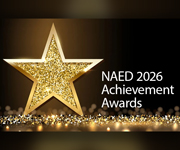By Brooke C. Stoddard
Many reasons should attract consumers to LED lighting. LED replacements are mercury-free, entirely recyclable, turn on instantly, do not flicker, consume less power (thus lowering electricity bills as well as carbon emissions from power plants), don’t shatter if dropped or hit, can be used with motion sensors, and hardly need replacing. Estimates are that Americans could save $250 million in energy bills over the next 20 years and avoid emitting 1,800 million metric tons of carbon emissions out of electric power plants. The Department of Energy (DOE) issued a report that if Americans switched immediately to Solid State Lighting (SSL), they would save 3.9 quadrillion BTUs of energy.
The main consumer resistant point is cost. LED product for home and light commercial use are preventing widespread acceptance, though according to the DOE prices have been falling about 20% per year.
DOE is well aware of consumer resistance. It looked into the era of attempting to win consumer favor for compact fluorescent lighting (CFL) and then issued a report titled Compact Fluorescent Lighting in America: Lessons Learned on the Way to Market (June 2006). The report noted lessons that could be applied to the effort at gaining consumer acceptance of LEDs. Among them are:
- Do research to learn what consumers know and don’t know about LEDs;
- Put accurate incandescent equivalency on packaging; rely as much as possible on retailers to educate;
- Coordinate with energy-efficiency programs but only when product is ready;
- Don’t rely on give-aways and coupons that will confuse consumers about the true cost of product;
- Stick to normal retail channels;
- Don’t launch product before performance issues are solved and then be strictly accurate about performance achievements;
- Pay close attention to pricing, which is critical but tricky;
- Understand that education of both consumers and retailers is critical;
- And start with niche marketing.
Also, DOE has a program to encourage market acceptance. This is described in its report Solid State Lighting Multi-Year Market Development Support Plan (May 2012). An introductory paragraph states: “DOE will implement a multi-year program to accelerate adoption of good quality, high performance SSL products that achieve significant energy savings and maintain or improve lighting quality. Relying on lessons learned from past emerging technology introductions, such as compact fluorescent lamps, and using newly developed market research, DOE will design its efforts to minimize the likelihood that the SSL market will repeat mistakes that greatly delayed market adoption of earlier emerging technology market introductions.”
For these efforts, DOE will work with the Next Generation Lighting Industry Alliance, the Illuminating Engineering Society (IES), the International Association of Lighting Designers and others in a program that “produces highly useful and widely available information for buyers and their agents, while producing important market opportunities for producers, [and] avoids the mistakes of the past.”
Additionally, DOE’s Gateway program works to place LEDs in large-purchase demonstration residential and commercial applications, then studies and publishes the results in order to stimulate consumer and specialized acceptance and purchase. Major projects have been street lighting, parking area lighting, and lighting in museums.
Surveys are beginning to show hope that consumers are becoming more accepting of LEDs. An Osram Sylvania “Socket Survey” late last year showed that 13% of Americans had LEDs in sockets and that 6 in 10 were more excited than worried about the phase-out of incandescent bulbs. Moreover, 89% of respondents said that energy efficiency is a top concern in their purchases. And in surveyed homes LEDs showed the most consistent growth among lighting options from 2008 to the present.
In more of a commercial realm, IES’s LD+A magazine recently ran an article called “Seven Ideas for Better LED Education” aimed at the architects and lighting designers.
Next: Cost and Efficacy Forecasts
—
Brooke C. Stoddard is an Alexandria, Virginia-based writer covering business, manufacturing, energy, and technology.
Tagged with Exclusive Feature, LED, lighting, tED




